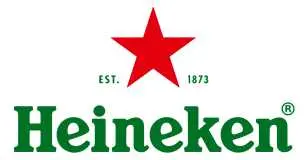
Veterinary Diagnostics Market Share, Trends, Growth Drivers, Analysis, CAGR Status, Challenges and Future Opportunities Till 2034: SPER Market Research
Category :
Medical Devices
Published: Nov-2021
Author: SPER Analysis Team
Veterinary Diagnostics Market Share, Trends, Growth Drivers, Analysis, CAGR Status, Challenges and Future Opportunities Till 2034: SPER Market Research
Global Veterinary Diagnostics Market is projected to be worth 7.26 billion by 2034 and is anticipated to surge at a CAGR of 7.35%.
Veterinary diagnostics is a branch of veterinary medicine that use a variety of techniques and procedures to diagnose and monitor the health of animals. It contributes significantly to animal well-being by accurately and swiftly diagnosing illnesses, infections, and other health issues. The discipline of veterinary diagnostics includes a vast variety of tests and procedures. Physical examinations, laboratory testing, imaging modalities, and molecular diagnoses are all included. Veterinary doctors utilize these technologies to collect information about an animal's health, detect diseases or abnormalities, and track treatment progress.
Drivers: The increase in animal infectious diseases, notably zoonotic infections, has highlighted the importance of precise and fast diagnosis. Veterinary diagnostic products are critical for identifying and treating diseases, providing prompt treatment, and limiting the spread of infections. Animals, like people, can develop chronic and age-related illnesses. The aging pet population, along with a renewed emphasis on preventative healthcare, is driving the demand for diagnostics that can aid in the early identification and treatment of illnesses including as arthritis, diabetes, and cancer. The increasing prevalence of infectious animal disorders and chronic diseases is predicted to drive up demand for veterinary diagnostics in the near future.
Request For Free Sample Report @ https://www.sperresearch.com/report-store/Veterinary-Diagnostics.aspx?sample=1
Challenges: The exorbitant expenses associated with veterinary testing may impede the advancement of the animal diagnostics market, even in the face of an increasing demand for animal health services. Depending on the condition, the typical cost of animal diagnostic tests ranges from $25 to $45. Diagnostic methods are costly and out of reach for many owners since they involve equipment, overhead, staff, and laboratory charges. Furthermore, it can take months or even years to conduct and study the sickness in some animal testing. Long processes and the high expense of breeding and housing are some other pet health restrictions that further hurt the sector.
Market Trends: The ability to diagnose animal diseases has been greatly increased by ongoing developments in veterinary diagnostic technology, such as molecular diagnostics, imaging modalities, and point-of-care testing. As veterinarians and pet owners look for cutting-edge solutions for comprehensive healthcare, these developments improve the speed and accuracy of tests and support the growth of the market as a whole. One important motivator is the development and uptake of point-of-care diagnostic instruments that offer quick, on-site results. In veterinary clinics, these tools facilitate prompt decision-making, allowing for prompt and effective treatment—a critical component of animal health outcomes.
Global Veterinary Diagnostics Market Key Players:
IDEXX Laboratories, Inc, Zoetis, Antech Diagnostics, Inc (Mars Inc), Agrolabo S.p.A, Embark Veterinary, Inc, Esaote SPA, Thermo Fisher Scientific, Inc, Innovative Diagnostics SAS, Virbac, and FUJIFILM Corporation are just a few of the major market players that are thoroughly examined in this market study along with revenue analysis, market segments, and competitive landscape data.
For More Information about this Report @ https://www.sperresearch.com/report-store/Veterinary-Diagnostics.aspx
Global Veterinary Diagnostics Market Segmentation:
By Product: Based on the Product, Global Veterinary Diagnostics Market is segmented as; Consumables, Reagents & Kits, Equipment & Instruments.
By Animal Type: Based on the Animal Type, Global Veterinary Diagnostics Market is segmented as; Production Animals, Companion Animals.
By Testing Category: Based on the Testing Category, Global Veterinary Diagnostics Market is segmented as; Clinical Chemistry, Microbiology, Parasitology, Histopathology, Cytopathology, Hematology, Immunology & Serology, Imaging, Molecular Diagnostics, Other Categories.
By End User: Based on the End User, Global Veterinary Diagnostics Market is segmented as; Reference Laboratories, Veterinarians, Animal Owners/ Producers.
By Region: This research also includes data for North America, Latin America, Asia-Pacific, Europe, Middle East & Africa.
This study also encompasses various drivers and restraining factors of this market for the forecast period. Various growth opportunities are also discussed in the report.
Would you like to view the sample pages?
Get Sample PagesExplore Related Reports
Domains Served
Our Global Clients
Our data-driven insights have influenced the strategy of 200+ reputed companies across the globe.




































